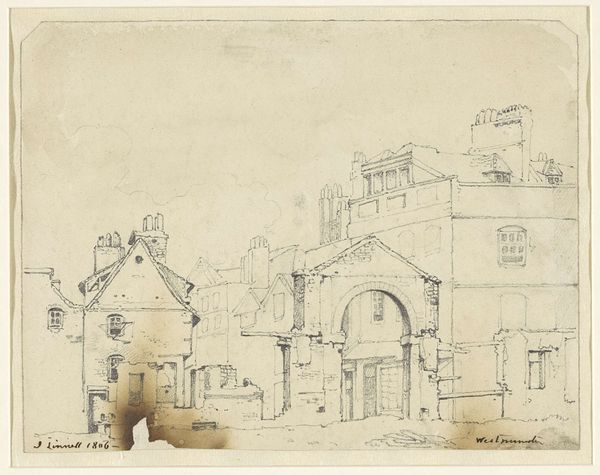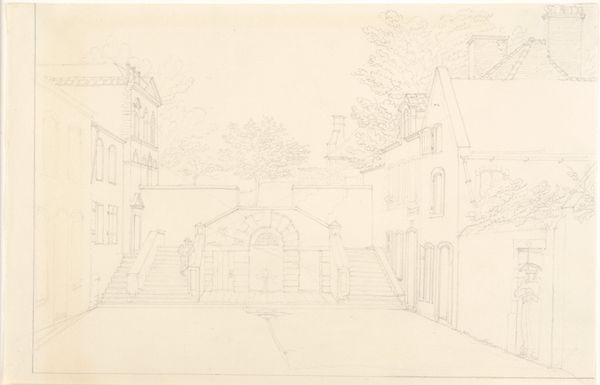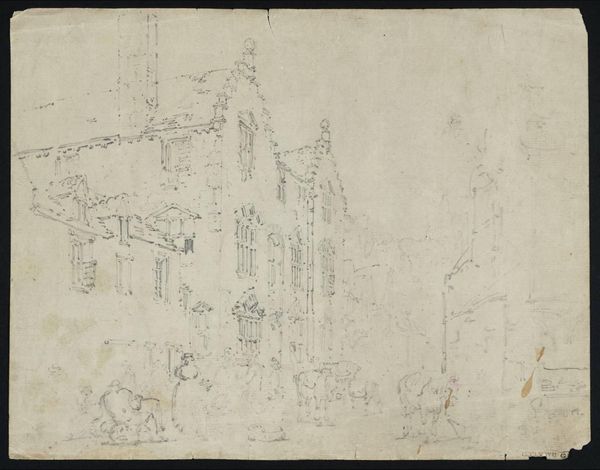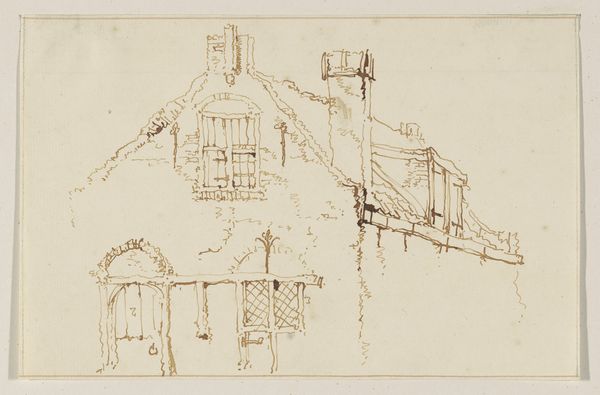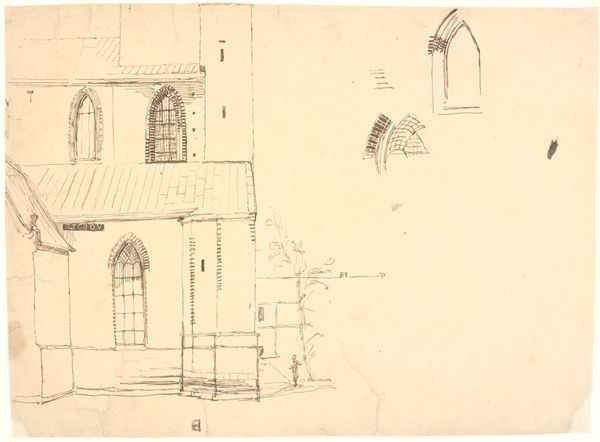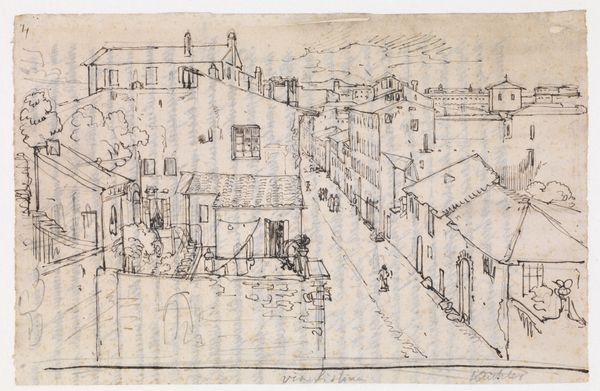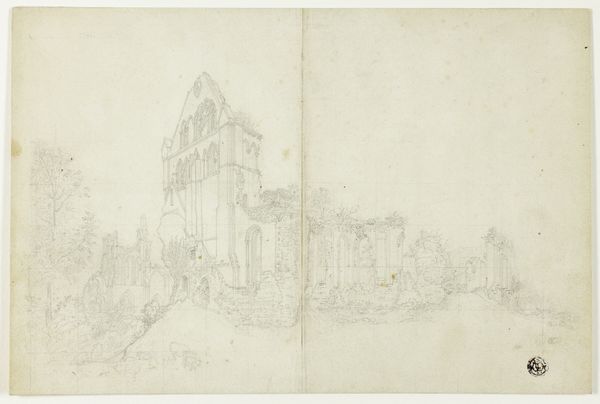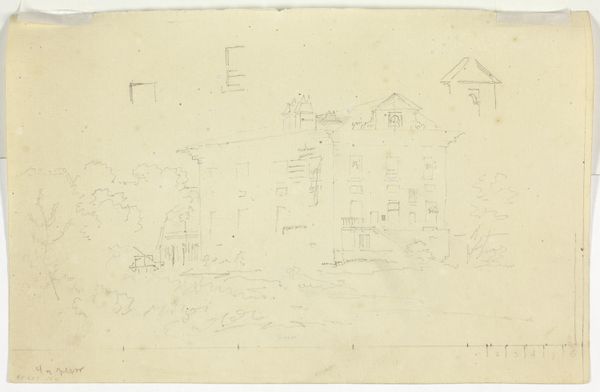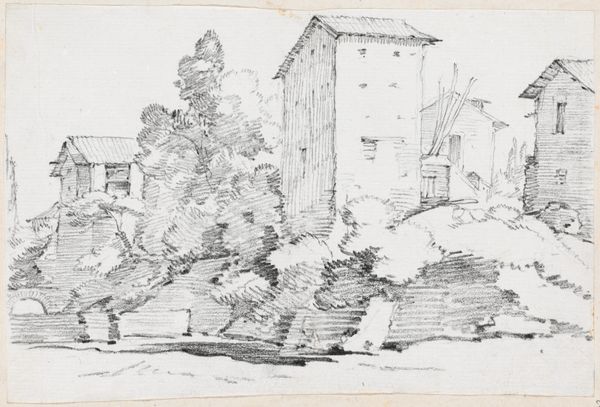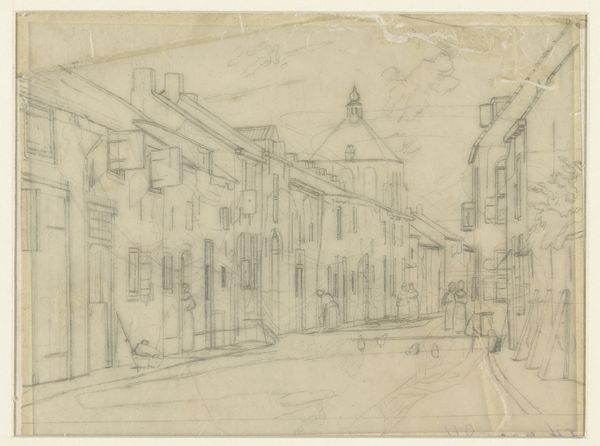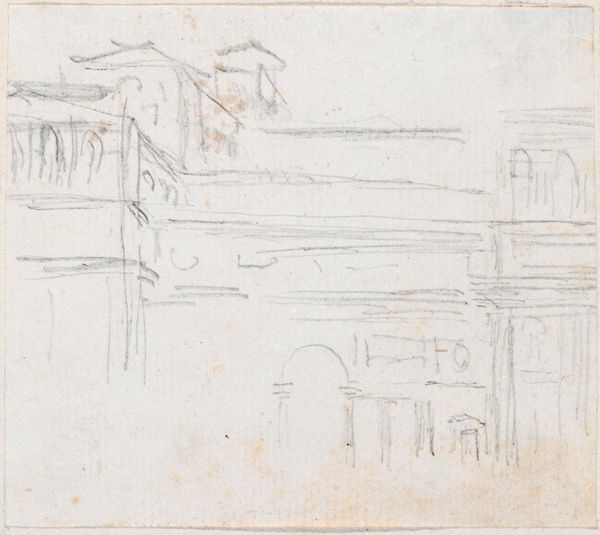
drawing, pencil
#
architectural sketch
#
drawing
#
aged paper
#
sketch book
#
landscape
#
etching
#
perspective
#
personal sketchbook
#
sketchwork
#
romanticism
#
pen-ink sketch
#
pencil
#
line
#
pen work
#
architecture drawing
#
cityscape
#
storyboard and sketchbook work
#
academic-art
Dimensions: 143 mm (height) x 166 mm (width) (bladmaal)
Curator: Christen Købke’s “Gårdinteriør fra en provinsby (Hillerød?)”, created in 1833. It's currently held here at the SMK, executed in pencil. Editor: My first impression is one of gentle melancholy. The pale sepia tones of the aged paper lend this cityscape a muted, almost dreamlike quality. It feels suspended, a quiet echo of life lived within these humble walls. Curator: It's interesting you say that. When contextualizing it, one has to realize this drawing stems from an era when Denmark was attempting to rebuild its cultural identity amidst national struggles. Picturesque depictions of small-town life, such as this one, gained importance. Editor: That historical context certainly deepens its resonance. Knowing it’s not just any old yard, but a carefully considered image, adds a layer of intrigue. I almost see the Romantic movement trying to grasp something solid from within the changing times. I see the past trying to assert itself in line and shadow. Curator: Precisely. What I find most fascinating here is Köbke's rendering of space. It gives an honest, less idealized view of small-town life at the time. See the strict adherence to perspective using that grid? Editor: That adherence to geometric precision almost contradicts my sense of it. But that contradiction… maybe that's the whole story here. The yearning for an escape versus the structured order of the present day? Or maybe Köbke was just a super precise sketcher and I read too much into everything. Curator: Perhaps both are true? His commitment to realistically documenting existing architectural details while hinting at grander themes is the sign of a good piece of art. We see an interesting dialogue between objective observation and a growing national Romanticism. Editor: I leave with a newfound appreciation for provincial quietude. It invites a moment of stillness. A glimpse into another time viewed through today’s eyes. It almost has a wistful presence—what else could it be?
Comments
No comments
Be the first to comment and join the conversation on the ultimate creative platform.
